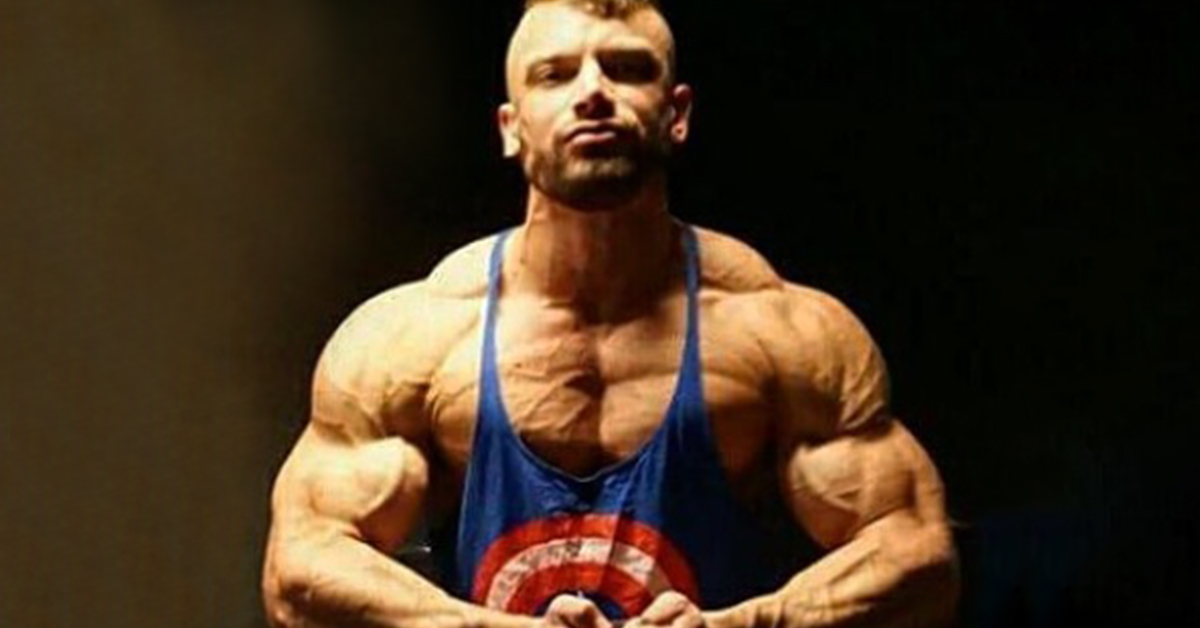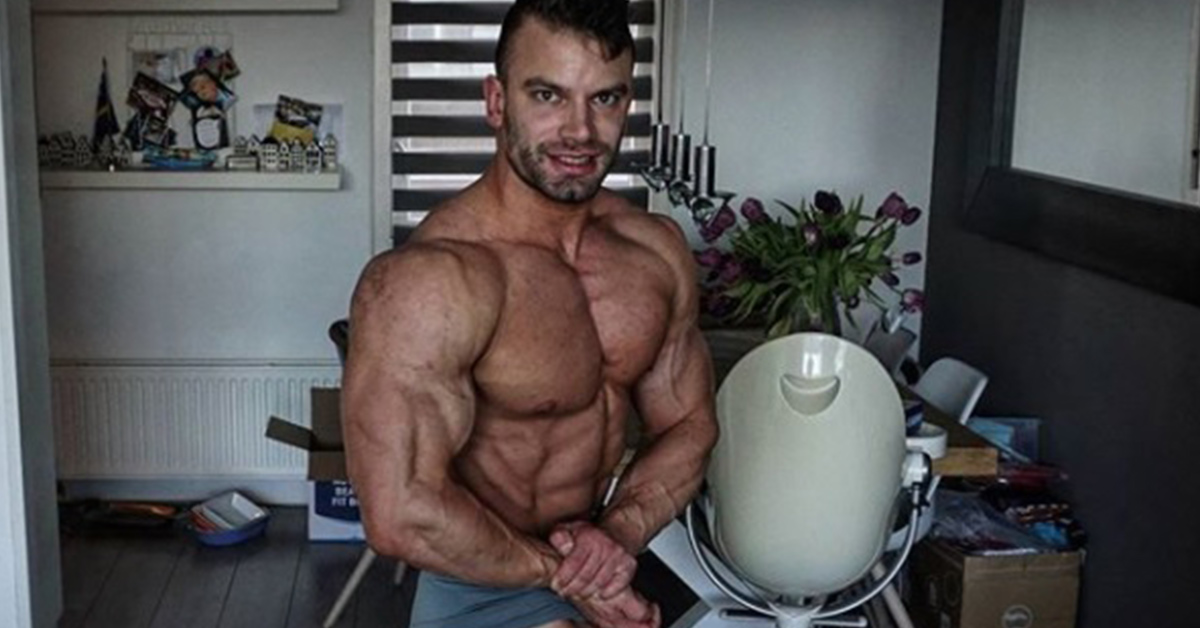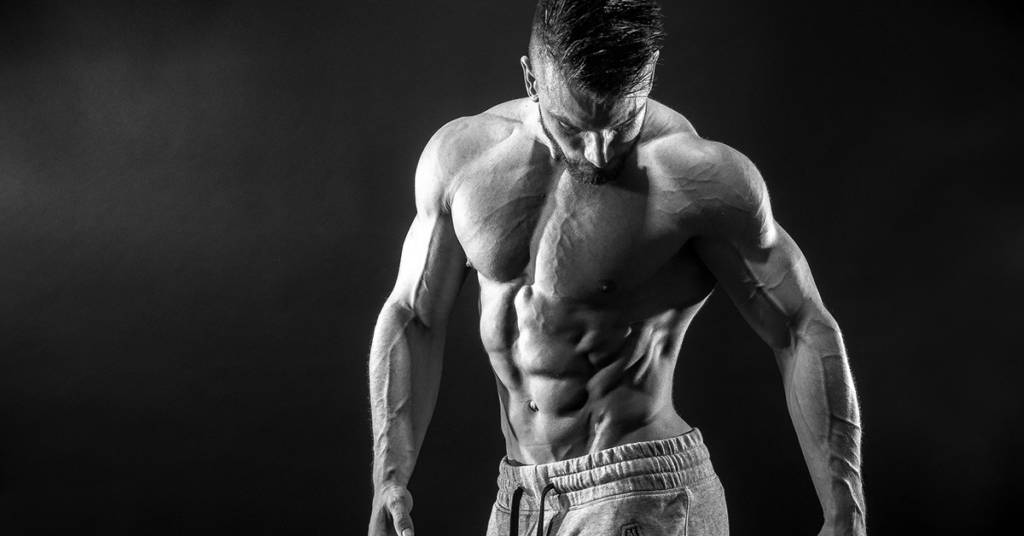The next muscle group in this series is the pectoral muscle. This muscle is not that big in terms of muscle volume, but a well-formed chest muscle is very important for a complete physical. Ladies, for you too! In this article we are going to discuss what the functions of the pectoral muscle are and what an optimal chest training looks like!
BREAST ANATOMY
The pectoral muscle consists of two parts, an upper part and a lower part. These are not the pectoralis major and minor as many people think, but 2 different parts of the same muscle, namely the pectoralis major (in the same way that, for example, the biceps has two heads).
From the fact that there are 2 different heads of this muscle, we could conclude that both heads have different functions; and it is.
The upper part, which has its origin at the collarbone, has its fibers (viewed from the insertion) sloping upwards. The lower head of the pectoral muscle has its origin on the sternum, and from the insertion the fibers run more horizontally. The lower fibers of the pectoral muscle also partly adhere to the ribs, and thus, seen from the origin, run obliquely upwards towards the joint insertion of all pectoral muscle fibers on the upper arm.
The pectoral muscles themselves do not attach to the shoulder blade, but their position is very important when training the muscles in the upper body and especially when training the pectoral muscle. More about this under the heading optimal training.

FUNCTIONS OF THE CHEST
As you may already know, a muscle can only actively shorten. When this happens, this muscle brings the origin and the insert closer together. It is therefore very easy to determine from the fiber direction of muscles what the function of this muscle will be. The function of the pectoral muscle is thus horizontal shoulder adduction; Moving the arm inward relative to the body in a horizontal movement, as happens with a fly movement.
Since the upper fibers run obliquely down from the origin (i.e. diagonally up from the insertion on the upper arm), these fibers can also contribute to shoulder flexion; Bringing it forward / up like a front raise.
Many people think of the movement their hands make relative to the body when training the chest muscles; As a trainer, it strikes me more and more that this can be confusing; a good tip: think from your elbows! Not from your hands. Since the pectoral muscle attaches to the upper arm, anything below the elbow joint is of no interest to the pectoral muscle.
So during a bench press it is elbows out, elbows in. With a fly just like that; not so much up and down.
THE OPTIMAL CHEST WORKOUT
Many bodybuilders do not necessarily choose the bench press as the main exercise in their schedule; I don’t do that either, but that’s because of an injury.
THE BENCH PRESS
It is indeed true that many other muscle groups participate in the bench press (as with all compound exercises) and therefore the bench press is not the best exercise to isolate the pectoral muscle.
However, studies show that pectoral size is strongly associated with 1RM on the bench press, leading some to conclude that heavy benching is perfect for pectoral muscle hypertrophy. Now, I am always very careful with cause-effect conclusions, as there are plenty of caveats to be made, but at least there is a correlation.
The bench press is also an exercise that can be overloaded very well, so if you can do this exercise pain-free, it is definitely recommended.
TOP OF CHEST
Since the upper part of the pectoral muscle provides shoulder flexion, as we have seen, it is recommended to train these fibers specifically; That is why incline chest exercises certainly deserve their place in an optimal stimulation for the chest muscle.
You will have to play around with the degree of ‘incline’ to find out which one is best for you; According to some literature, around 45 degrees is optimal, but keep in mind that each degree you move up further shifts the emphasis further to the upper fibers of the pectoral muscle, as well as the shoulders.
In addition, the chest muscles are in a slightly more favorable position (slightly shortened) when you rotate internally; (This means as much as palms facing your feet.)

SENSITIVE SHOULDERS? READ MORE!
However, people with sensitive shoulders will also know that internal rotation can often be a sensitive / painful position for your shoulders; So be careful when trying out different exercises and positions. You can say it out loud by now, but no one exercise is irreplaceable. If something hurts in the wrong way, don’t do it.
In general (especially with sensitive shoulders) it is best to maintain retraction and depression; shoulder blades back and down. (see the back article for more information about this). Well-developed back muscles, especially the lower parts of the trapezius, are extremely important for proper chest muscle training.
However, it can help a little to get into light protraction when you move concentrically, in order to be able to shorten the chest muscle optimally and thus train optimally; In other words, as your elbows move together, allow your shoulder blades to move slightly apart and forward.
A trick that I have been using lately, as some have already noticed on my Instagram, is to place a foam roller between the back of the chair and your shoulder blades. This way you can move a lot more freely.
FOCUS ON TECHNIQUE, NOT WEIGHT
As with any muscle, not only mechanical stress is important; it is therefore not just about the kilos that are moved. Metabolic stress also has its place in hypertrophy, and pounds do not say anything about the total load on the muscle itself. The only thing your body registers is the force with which the tendon pulls on the bone; A cable fly with a good shape at 20 kilos can therefore certainly provide more results and even more mechanical stress than a cable fly with 50 kilos that you use to fly a kite.
Since metabolic stress is exhausting and this fatigue can get in the way of your heavy lifts, it is just as with any other muscle group (CONTINUALLY) advisable to do your heavy exercises first and finish with the isolation work.
Finally, you will always be able to generate more output with exercises where you can brace yourself well than with exercises where you have to brace yourself. In other words: a seated cable fly will be able to generate a much greater potential training stimulus than a standing cable fly. A because you cannot smuggle and B because you can focus all your strength on moving the weight instead of partly also on posture and giving counter pressure.
The average person exercises the pectoral muscle optimally 2 to 3 times a week, with a total of 16-20 work sets per week.

SAMPLE CHEST WORKOUT SCHEDULE
TRAINING 1
A Bench press, 3 sets, 6-8 reps
B Incline dumbbell press, 3 sets, 6-8 reps
C1 seated cable fly (internal rotation), 3 sets, 10-12 reps
C2 seated ncline cable fly, 3 sets of 10-12 reps
* Exercises C1 and C2 are performed as a superset.
TRAINING 2
A Decline Barbell press, 3 sets, 6-8 reps
B Incline seated cable press, 3 sets, 8-10 reps
C Seated cable fly, 2 sets, 20 reps, different heights each 4 reps, work from incline to decline)

